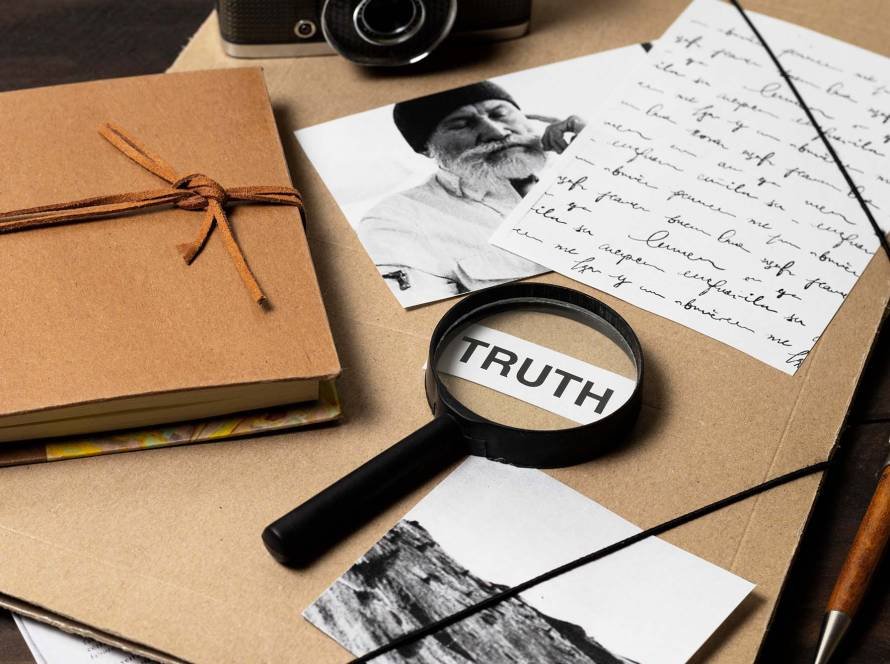In the realm of crime-solving, investigators require a diverse set of skills, strategies, and tools to unravel complex cases and bring perpetrators to justice. The Investigator’s Toolkit encompasses a wide range of valuable tips and tricks that empower law enforcement professionals and investigators to enhance their crime-solving abilities. This toolkit serves as a comprehensive resource, providing valuable insights and techniques that can significantly contribute to the successful resolution of criminal cases.
The Investigator’s Toolkit is designed to equip investigators with practical approaches and methodologies to tackle the challenges they encounter during the investigative process. From the initial stages of collecting evidence to analyzing data, conducting interviews, and building a compelling case, these tips and tricks enhance investigators’ effectiveness and efficiency in solving crimes.
Within the Investigator’s Toolkit, numerous essential components come together to form a comprehensive approach to crime-solving. These components include:
- Crime Scene Examination and Evidence Collection: Thoroughly analyzing crime scenes and employing effective evidence collection techniques are critical in gathering valuable clues and physical evidence that can help reconstruct the crime and identify the responsible parties.
- Witness Interviews and Statements : Skillful interviewing of witnesses is essential for obtaining accurate and detailed accounts of the events surrounding a crime. Effective techniques, such as active listening, building rapport, and asking the right questions, contribute to the collection of reliable information.
- Forensic Science and Technology: The utilization of advancements in forensic science and technology, such as DNA analysis, fingerprinting, digital forensics, and ballistics, plays a crucial role in identifying and linking evidence to suspects, thereby strengthening the investigative process.
- Profiling and Behavioral Analysis: Profiling techniques and behavioral analysis assist investigators in developing insights into the mindset, motivations, and characteristics of potential offenders. By understanding the behavioral patterns and psychological aspects of criminals, investigators can narrow down the list of suspects and focus their efforts more effectively.
- Data Analysis and Crime Mapping: The analysis of data, including crime statistics, patterns, and trends, enables investigators to identify hotspots, modus operandi, and potential links between crimes. Crime mapping techniques aid in visualizing and identifying patterns, facilitating the allocation of resources and strategic decision-making.
- Interviewing and Interrogation Techniques: Skillful interviewing and interrogation techniques help investigators elicit critical information, uncover inconsistencies, and detect deception. By employing effective communication strategies, active listening, and behavioral analysis, investigators can extract valuable insights from suspects and witnesses.
The aim of The Investigator’s Toolkit is to provide law enforcement professionals and investigators with a comprehensive guide, offering practical tips, techniques, and strategies to enhance their crime-solving abilities. By continually honing their skills, leveraging technological advancements, and embracing innovative approaches, investigators can navigate the complex landscape of crime investigation more effectively, leading to successful outcomes and safer communities.
In the following sections, we will delve into each component of The Investigator’s Toolkit, providing in-depth insights, practical examples, and expert advice to equip investigators with the necessary tools to tackle the intricacies of crime-solving. By leveraging the knowledge and techniques shared within The Investigator’s Toolkit, investigators can approach their work with confidence, professionalism, and a greater likelihood of achieving justice for victims and holding perpetrators accountable.
Crime Scene Examination and Evidence Collection
Crime scene examination and evidence collection are essential components of The Investigator’s Toolkit, providing investigators with crucial insights and tangible evidence to solve crimes. These techniques form the foundation of the investigative process, enabling investigators to gather critical information and physical evidence that can unravel the truth behind criminal acts. By employing effective crime scene examination and evidence collection strategies, investigators enhance their abilities to reconstruct the crime, identify key leads, and build a strong case against the perpetrator.
- Securing the Crime Scene: One of the first steps in crime scene examination is securing the area to preserve its integrity and prevent contamination. Investigators must establish control and ensure that only authorized personnel have access to the scene. This crucial step protects potential evidence and maintains its admissibility in court.
- Conducting a Systematic Survey: Investigators systematically survey the crime scene, carefully observing and documenting initial conditions, positions of objects, and any potential evidence. This comprehensive survey serves as a reference point for further analysis and helps establish a clear understanding of the crime scene.
- Documenting the Crime Scene: Thorough documentation is a vital aspect of crime scene examination. Investigators meticulously record their observations, take photographs, create sketches or diagrams, and make detailed notes. These records capture the scene’s layout, relevant objects, and potential evidence, aiding in the investigation and providing a visual reference for future analysis.
- Conducting a Methodical Search: Investigators employ systematic search techniques to methodically examine the crime scene. Grid searches, spiral searches, or zone searches ensure comprehensive coverage and increase the likelihood of identifying and collecting relevant evidence. Every detail, no matter how seemingly insignificant, is scrutinized for its potential value to the investigation.
- Identifying and Collecting Physical Evidence: Physical evidence plays a crucial role in crime-solving. Investigators meticulously identify, collect, and preserve physical evidence found at the crime scene. This can include fingerprints, DNA samples, weapons, clothing, or any other items that may link to the crime or potential suspects. Specialized tools and techniques are employed to ensure proper handling and preservation of evidence.
- Documenting and Collecting Trace Evidence: Trace evidence refers to small or microscopic materials left at the crime scene, such as fibers, hair, glass fragments, or soil. Investigators employ specialized techniques to carefully collect and package trace evidence, minimizing the risk of contamination and preserving its evidentiary value.
- Collaborating with Forensic Experts : The Investigator’s Toolkit emphasizes the importance of collaboration with forensic experts. Crime scene investigators work closely with forensic specialists who analyze the collected evidence in laboratories. These experts employ advanced techniques to extract valuable information, such as DNA analysis, ballistics, and chemical analysis, which can provide critical insights into the crime.
Effective crime scene examination and evidence collection techniques provide investigators with a wealth of information and tangible evidence to support their investigations. By integrating these techniques into The Investigator’s Toolkit, investigators can uncover hidden clues, establish connections, and construct a comprehensive understanding of the crime. The diligent application of crime scene examination and evidence collection methodologies significantly contributes to successful crime-solving, ultimately leading to the apprehension and prosecution of offenders.
Witness Interviews and Statements

Witness interviews and statements form a critical component of The Investigator’s Toolkit, providing investigators with valuable firsthand accounts and information crucial for solving crimes. Conducting effective witness interviews and obtaining accurate statements are essential skills for investigators, enabling them to gather key details, establish timelines, and identify potential suspects. By employing appropriate techniques and strategies during witness interviews, investigators enhance their ability to collect reliable and relevant information, ultimately aiding in the resolution of criminal cases.
- Preparing for Witness Interviews: Prior to conducting witness interviews, investigators must thoroughly prepare by reviewing case files, familiarizing themselves with the details of the crime, and identifying specific areas of inquiry. This preparation helps in structuring the interview and asking relevant questions.
- Establishing Rapport: Building rapport with witnesses is crucial for creating a comfortable and trusting environment. Investigators should approach witnesses with empathy, respect, and sensitivity, ensuring that they feel supported and willing to share their experiences and observations.
- Active Listening: Active listening is a fundamental skill during witness interviews. Investigators carefully listen to witness statements, paying attention to both verbal and non-verbal cues. This active engagement demonstrates interest and encourages witnesses to provide detailed and accurate information.
- Open-Ended Questions: By asking open-ended questions, investigators allow witnesses to provide detailed narratives rather than simple “yes” or “no” answers. This approach encourages witnesses to share their perspectives and memories, enabling investigators to gain a comprehensive understanding of the events.
- Probing for Specific Details: Investigators employ probing techniques to elicit specific details from witnesses. By asking follow-up questions and seeking clarification, investigators can extract additional information and ensure a comprehensive account of the events.
- Neutral and Non-Suggestive Approach : It is essential for investigators to maintain a neutral stance during witness interviews, avoiding leading or suggestive questions that could influence witness testimony. This approach helps preserve the integrity and accuracy of witness statements.
- Documenting Witness Statements: Accurate and thorough documentation of witness statements is critical. Investigators should meticulously record witness accounts, capturing the details of the events, descriptions of individuals involved, and any other relevant information. This documentation serves as a reliable reference for the investigative process.
- Multiple Witness Comparison: In cases involving multiple witnesses, investigators compare and analyze their statements to identify consistencies and discrepancies. This process helps establish a more accurate understanding of the events and assists in identifying credible information.
- Handling Vulnerable Witnesses : Investigators encounter witnesses who may be vulnerable due to trauma, fear, or other factors. It is essential to approach such witnesses with care and sensitivity, ensuring appropriate support is provided throughout the interview process.
- Collaborating with Legal Professionals : Investigators may collaborate with legal professionals, such as prosecutors, to ensure witness statements meet legal requirements and are admissible as evidence in court. This collaboration helps strengthen the case and supports effective prosecution.
By incorporating effective witness interview techniques into The Investigator’s Toolkit, investigators can elicit reliable information, uncover crucial details, and establish a solid foundation for their investigations. The accurate and comprehensive witness statements obtained through these techniques contribute to the overall success of crime-solving efforts, enabling investigators to bring justice to victims and hold perpetrators accountable.
Utilizing Forensic Analysis
Forensic analysis plays a pivotal role in The Investigator’s Toolkit, providing investigators with scientific methods and techniques to uncover valuable evidence and solve crimes. By leveraging specialized knowledge and advanced technologies, forensic analysis enables investigators to examine physical evidence, identify perpetrators, and reconstruct the events surrounding a crime. The application of forensic analysis techniques enhances the investigative process, offering objective insights and supporting the pursuit of justice.
- DNA Analysis: DNA analysis is a powerful tool in forensic analysis, allowing investigators to identify individuals present at a crime scene, link suspects to the evidence, and establish connections between victims and perpetrators. Through DNA profiling, forensic experts compare biological samples to generate conclusive results, aiding in the identification and exclusion of potential suspects.
- Fingerprint Examination: Fingerprint analysis is a fundamental forensic technique used to identify individuals by examining the unique patterns on their fingertips. Investigators collect and compare fingerprints found at crime scenes to those in databases, facilitating the identification of suspects or linking them to specific locations or objects.
- Ballistics and Firearms Examination: Ballistics analysis involves the examination of firearms, ammunition, and bullet trajectories to determine the type of weapon used, match bullets to firearms, and establish links between firearms and crime scenes. By analyzing bullet patterns, markings, and other ballistic evidence, experts can provide critical insights into the sequence of events and the involvement of specific weapons.
- Toolmark Analysis: Toolmark analysis involves the comparison of marks or impressions left by tools or instruments found at a crime scene. Forensic experts examine toolmarks on surfaces or objects to establish potential matches with specific tools, aiding in identifying the source or potential suspect.
- Toxicology Analysis: Toxicology analysis focuses on the examination of biological samples to identify the presence of drugs, poisons, or other substances in the human body. This analysis helps determine the cause of death, establish the influence of substances on individuals’ behavior, and provide critical evidence for cases involving drug-related crimes or poisoning.
- Crime Scene Reconstruction : Forensic analysis also plays a crucial role in crime scene reconstruction, combining various disciplines to create a comprehensive understanding of the events leading to a crime. By analyzing physical evidence, witness statements, and other data, forensic experts contribute to the development of a cohesive narrative, aiding investigators in establishing timelines, identifying actions, and reconstructing the sequence of events.
The utilization of forensic analysis techniques enhances the investigative process by providing objective and scientific insights into criminal.
Surveillance and Monitoring Techniques

Surveillance and monitoring techniques play a crucial role in modern crime-solving efforts. These techniques involve the systematic observation and monitoring of individuals, locations, or activities to gather valuable information and evidence related to criminal investigations . By employing surveillance and monitoring techniques effectively, law enforcement agencies and investigators can enhance their abilities to prevent crimes, gather intelligence, identify suspects, and build strong cases.
- Physical Surveillance: Physical surveillance involves the covert observation of individuals or locations using human agents. Trained personnel discreetly monitor the movements, interactions, and activities of individuals or groups of interest, gathering firsthand information and evidence. Physical surveillance can provide valuable insights into the planning, execution, and coordination of criminal activities.
- Technical Surveillance: Technical surveillance utilizes advanced electronic devices and technologies to gather information remotely. This can include the use of cameras, listening devices, GPS trackers, or other specialized equipment. Technical surveillance enables investigators to monitor targets from a distance and capture audio, video, or other data that can support investigations.
- Digital Surveillance: With the widespread use of digital communication platforms, digital surveillance has become increasingly important. It involves monitoring online activities, such as social media platforms, email communications, or internet browsing behavior. Digital surveillance can help uncover online criminal networks, identify digital evidence, track communication patterns, and detect cybercrimes.
- Financial Monitoring: Financial monitoring focuses on tracking and analyzing financial transactions to detect money laundering, fraud, or other financial crimes. Investigators collaborate with financial institutions, analyze banking records, and employ specialized tools to identify suspicious patterns, trace illicit money flows, and follow the financial trails of criminals.
- Closed-Circuit Television (CCTV) Surveillance : CCTV surveillance involves the use of video cameras to monitor public or private spaces. CCTV systems are installed in strategic locations to capture footage that can be reviewed for evidence or provide leads in criminal investigations. CCTV surveillance is commonly used in retail stores, banks, transportation hubs, and other public areas to deter crime and aid in investigations.
- Mobile Surveillance: Mobile surveillance involves tracking and monitoring the movements and activities of individuals or vehicles using mobile tracking technologies. This can include the use of GPS tracking devices or software that allows investigators to monitor suspects’ whereabouts discreetly. Mobile surveillance can provide real-time information, aid in tracking criminal activities, and assist in apprehending suspects.
- Internet and Social Media Monitoring : Internet and social media monitoring involve tracking online platforms to gather intelligence, detect criminal activities, or identify individuals involved in illegal behavior. Investigators analyze public posts, monitor online discussions, and use specialized software to identify potential threats, uncover digital evidence, and track the online activities of suspects.
By utilizing surveillance and monitoring techniques effectively, law enforcement agencies and investigators can gather critical information, uncover evidence, and apprehend criminals. These techniques are essential tools in the investigator’s toolkit, enabling proactive and targeted.
Conclusion
In conclusion, effective crime-solving requires a combination of strategic approaches and specialized techniques. By following the key tips and tricks discussed in this article, investigators can significantly enhance their ability to solve crimes and bring perpetrators to justice.
Thorough crime scene examination and evidence collection lay the foundation for successful investigations. By paying attention to detail and preserving evidence meticulously, investigators can ensure the accuracy and reliability of the collected information.
Interviewing witnesses and obtaining their statements is crucial for gathering valuable information. Careful questioning techniques and active listening help maximize the accuracy and reliability of witness testimonies, providing important leads and insights into the crime.
The utilization of forensic analysis techniques, such as DNA analysis, fingerprint examination, and digital forensics, allows investigators to uncover crucial evidence, identify suspects, and reconstruct the sequence of events. These techniques provide scientific and objective insights that strengthen the investigative process.
Equipping investigators with a diverse set of tools and techniques through the Investigator’s Toolkit is essential. Surveillance and monitoring techniques, both physical and digital, allow investigators to discreetly observe and gather intelligence, aiding in the identification of suspects and the collection of evidence.
Collaboration and information sharing among law enforcement agencies are vital for successful crime-solving. By working together, sharing resources, and coordinating efforts, investigators can leverage a broader range of expertise and increase their chances of solving complex cases.
Overall, the effective crime-solving tips and tricks outlined in this article serve as valuable guidance for investigators. By implementing these strategies and techniques, law enforcement agencies can improve their investigative capabilities, increase the likelihood of solving crimes, and ultimately contribute to safer communities.




